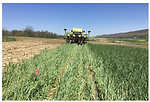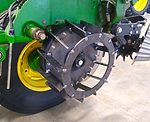Articles Tagged with ''cover crop termination''
Dragline With Manure Assists Cover Crop Termination
No-Tillers from Perrysville, Ohio, utilize manure from their 650-cow dairy to maintain high-yielding double crops, and feed for their herd.
Read More
Killer Tips for Rolling Your Covers
Thorough cover crop termination with this equipment requires using the right plant varieties and carrying out operations at the right time.
Read More





.jpg?height=125&t=1667503080&width=150)






